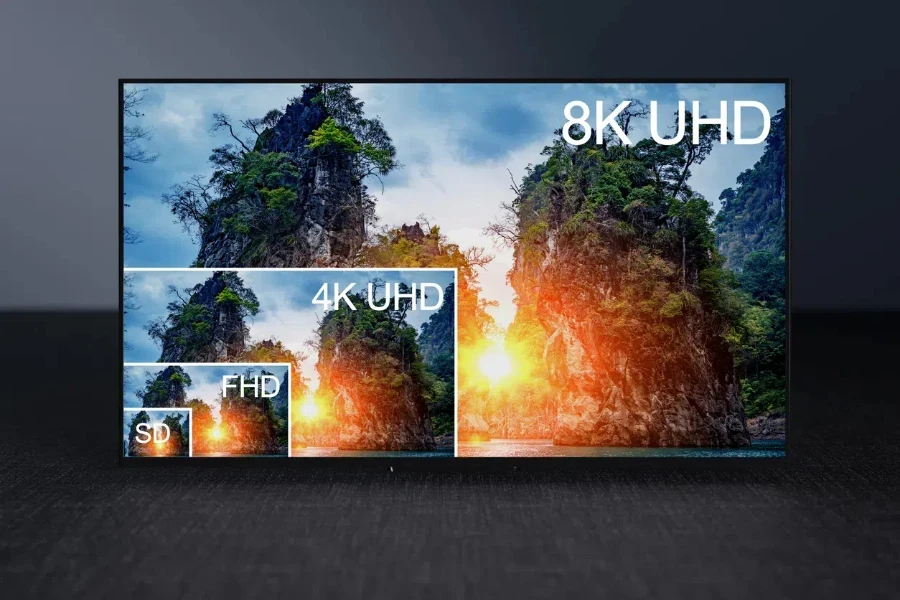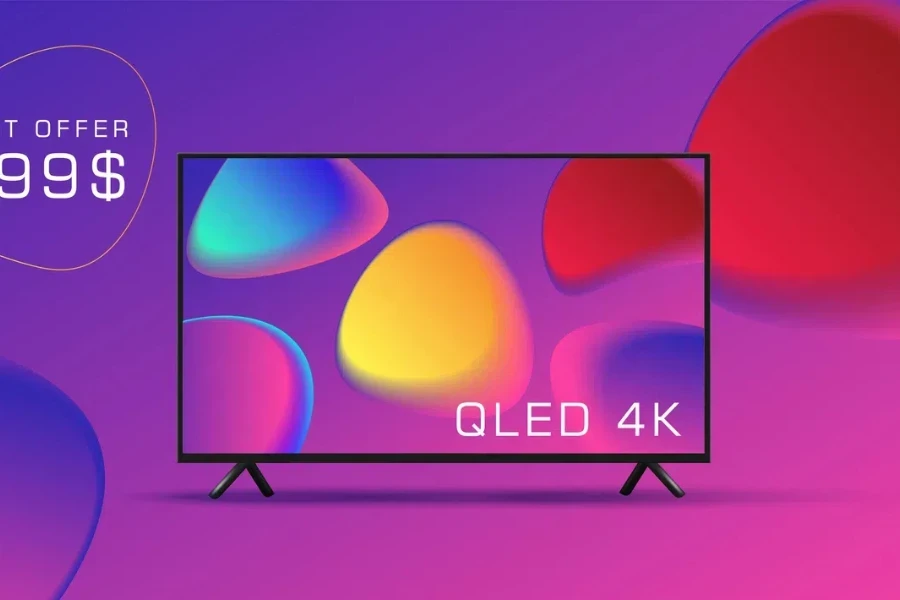UHD and OLED are incredibly popular screen technologies for devices like TVs, smartphones, desktop monitors, laptops, tablets, and even smartwatches. UHD, short for Ultra High Definition, offers sharper, more detailed images than standard HD.
On the other hand, OLED screens stand out because they don’t rely on backlighting, making them ultra-thin while delivering incredible contrast and vibrant colors. So, how do these technologies compare? This article will explore everything retailers should know about both of these options for their buyers in 2025.
Table of Contents
What is UHD? A display resolution standard
What is OLED? A display technology
UHD vs. OLED: All the differences retailers should know
Final verdict
What is UHD? A display resolution standard

Ultra-High Definition (UHD) helps guide consumers toward higher-quality displays. Essentially, it refers to screens with sharper resolution, more true-to-life colors, and smoother motion than standard HD screens.
Although most think UHD refers to screens with a resolution of 3,840 x 2,160 (or 4K), the term covers higher resolutions like 5K and 8K. People also confuse UHD with branding like Crystal UHD, which refers to LCD panels.
Remember that UHD only helps consumers identify high-quality displays and not refer to a specific technology. According to the CEA, a screen qualifies as Ultra HD if it has a minimum of 4k resolution and a 16:9 aspect ratio.
What is OLED? A display technology

Unlike most UHD screens, Organic Light-Emitting Diodes (OLEDs) create light and images directly. These displays are more common in smartphones, laptops, tablets, and monitors, and many consumers prefer them for their deeper blacks and stunning color contrasts.
How does this technology accomplish such a feat? By switching each diode on and off with electricity. For instance, the diodes will shut down completely when creating black, creating the best black pixels anyone can get today.
However, exceptional color contrast and image quality are not the only benefits of OLED screens. They also help manufacturers make tablets, smartphones, and laptops slimmer and more compact. Since they don’t need backlighting, there’s extra room for sleek and modern designs.
UHD vs. OLED: All the differences retailers should know
1. UHD vs. OLED: Color and black levels

For years, OLED screens dominated all things color accuracy. However, backlighting has seen some amazing advancements (especially the introduction of quantum light technology), bringing them closer to OLED’s performance level.
Today, many Ultra HD devices come with incredible color ranges, allowing them to display even more hues. However, a screen’s image quality still depends on how well it can produce deep, dark tones—they are the key elements for creating rich colors and strong contrast.
OLED screens dominate this category. They excel at producing true pitch-black displays and offer an almost unmatched contrast ratio. Although UHD screens use Full-Array Local Dimming (FLAD) technology to deliver impressive blacks, they don’t match OLED’s performance and depth.
2. UHD vs. OLED: Display technology and price
UHD monitors combine advanced LCD technology with LED backlighting to create their visuals. In contrast, OLED monitors use organic compounds to generate light directing, removing the need for backlighting. This design gives OLED screens better viewing angles, accurate colors, and sharper contrast than UHD variants.
More importantly, OLED screens are usually more expensive than UHD displays because the technology is more costly to make. However, consumers with larger budgets can find OLED screens with UHD features. On the other hand, UHD screens are more affordable but can also drain the wallet when targeting 4 K models.
3. OLED vs. Ultra HD: Power consumption

OLED screens are more power-efficient than LCDs for most images, using only 60% to 80% of the energy. If consumers watch mostly black images, they’ll use even less—around 40% of LCD power. However, displaying bright white backgrounds (like documents or web pages) can consume up to three times more energy than LCDs.
On the other hand, it’s different for UHD screens. Their power consumption typically rises with larger screen sizes and higher resolutions. On average, a 55-inch UHD screen uses around 77 watts, while a 4k display consumes about 80 watts.
4. UHD vs. OLED: Contrast and color accuracy
OLED screens have much better contrast ratios and color accuracy than UHD displays. Since they can switch off pixels individually, OLEDs can produce true blacks and striking contrasts. Conversely, UHD screens struggle with color accuracy because of their backlighting. It usually creates lower contrasts and washed-out blacks.
5. UHD vs. OLED: Sharpness and clarity

UHD offers amazing sharpness and clarity, making it perfect for fast-moving visuals. In comparison, OLED displays may occasionally struggle with motion blur or lag when handling quick-paced images.
6. UHD vs. OLED: Brightness and viewing angles
Thanks to their backlighting technology, UHD screens are brighter than OLEDs. The best part? These screens pair with quantum dot technology, ensuring viewers enjoy consistent brightness regardless of screen size.
That said, OLEDs hold their own in this category despite prioritizing deep blacks. They offer stunning contrast between light and dark areas, though using maximum brightness for extended periods will drop the screen’s lifespan.
Additionally, OLED beats UHD when it comes to viewing angles. It’s far superior, thanks to OLED’s self-illuminating pixels that ensure viewers can get consistent image quality from any angle. However, UHD screens may struggle with pixel shutter issues, affecting clarity.
7. OLED TV vs. UHD TV: Refresh rate and eye comfort

How fast can each screen technology update its display? OLED displays generally have faster rates than UHDs and have a clear advantage in the eye comfort area, too. Here’s an interesting fact: ultra HD monitors emit up to 66% blue light, while OLEDs only release 33%, making them the healthier choice for extended use.
Final verdict
So, should retailers buy UHD or OLED screens? Well, who says they can’t sell both? OLED screens appeal to anyone looking for the best picture quality and viewing experience. Some models even offer UHD benefits if consumers are willing to pay for them. On the other hand, UHD is more than enough for anyone looking for a good screen for video games and computer games (even video calls).



